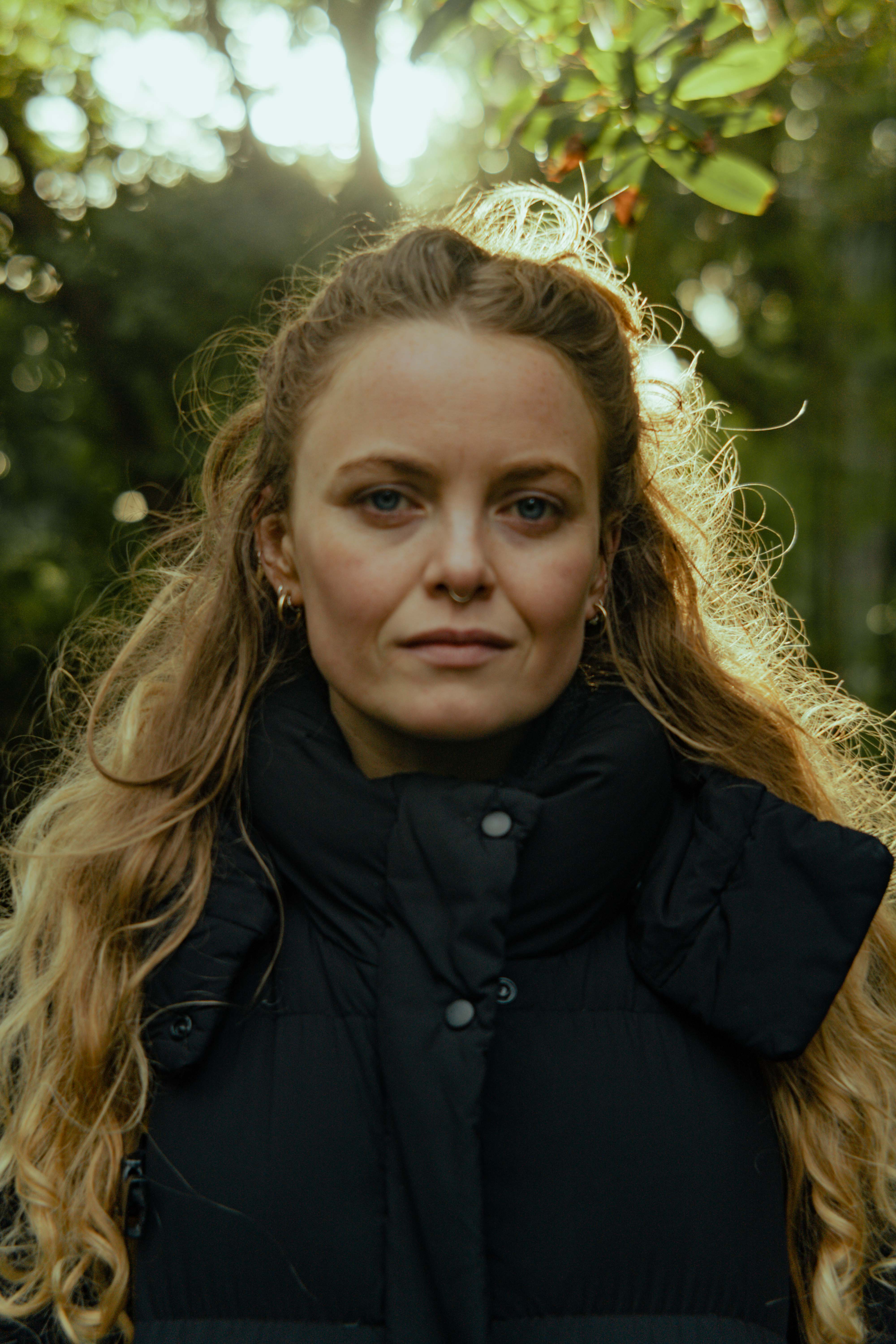
I'm not a big fan of manual focus lenses full stop - the way I shoot requires fast autofocus and the ability to shoot lots of photos quickly which just isn't possible with manual focus lenses - especially when shooting with your aperture wide open. Even with focus peaking on, it's hard to get the focus perfect and lots of the photos I took using the Lomography Bokeh Control Art Lens had a soft focus on the eyes despite focus peaking telling me they should be sharp.
Focal Length: 64 mm
Lens Construction: 5 elements 3 groups
Maximum Aperture: f/2.0
Apertures Available: f/2.0, f/2.8, f/4, f/5.6, f/8, f/11, f/16
Dual Aperture Mechanism: iris style (15 blades) and special shaped drop-in rear aperture plates
Image Circle: 44 mm
Field of View: 37°
Lens Mounting Profile: Full-frame mirrorless Sony E, Nikon Z and Canon RF mounts
Electronic Contacts: No
Closest Focusing Distance: 0.6 m
Focusing Mechanism: Helicoid
Filter Thread: 55 mm
Detachable Lens Hood: Yes
Finish: Brass with black brass ring elements or Black aluminum
Weight: Brass 620 g (1.3 lbs), Aluminum 395 g (0.87 lbs)
I'm still trying to decide whether I think the lens looks cool or is a little bit lame. It's like Snoop Dog and Mad Max have come together to design a lens... it's loud, and a little bit steampunk, although it is entirely different from any other lens I've ever seen which I suppose is refreshing. However, for me, the gold is just a little too flashy. I should mention, that it does come in a black option as well, but based on its performance, that wouldn't change my mind on whether I'd want it in my kit bag or not...
One of the first things you notice about this lens is one of the things that sets it apart from other manual lenses - a sliding knob on the very front that allows you to change the bokeh effect. You can opt to have a very rounded, bubble-like bokeh, a very classic-looking blurred background or a very smooth look where the colors almost blur into one another.
It has a clickless aperture ring which allows you to go from f/2 - f/16 and even though there are markings on the lens itself, it was difficult to be super accurate with it. From the moment I got this lens out of the box, I sensed it was a lens to use more for enjoyment and creativity than for taking professional shots but that was perhaps because it was shiny gold and I would feel a bit ridiculous bringing it out on a shoot.

There is a focus ring towards the back of the camera which allows for a smooth transition between focus points and you will be using this a lot, especially if you change bokeh modes frequently. There's no way you would get away with using this lens without focus peaking, I had mine set too high but even then it was hard to get it perfect. I tried using both focus peaking and focus zoom when taking some portraits and still found it hard to take a shot where the eyes are pin sharp.
Another quirky feature of this lens is you can change the look of the bokeh using a set of aperture filters. They come in different shapes including hearts, snowflakes, mandalas and more. They get fitted into the back of the lens and held in by a barrel that you can screw in and out but the barrel seemed to be missing from the demo model so I never got a chance to test them out. However, this isn't a reason I would go out and buy this lens since I think Bokeh which is any other shape than round is tacky.
Lomography Nour Triplet: Build and Handling

The lens itself feels very nice to use - it features a focus ring, an aperture ring plus a switch that enables you to change between three bokeh modes - soft, classic and bubble. As you'd expect the soft mode gives a very dreamy, smooth background, the bubble mode makes the bokeh very rounded while the classic mode gives a look you'd expect from any other lens.
When you switch between the different bokeh modes you do annoyingly have to refocus every time as the point of focus drastically changes. If you're trying to see the difference between shooting on soft and bubble for example, this can be quite time-consuming as you have to refocus and recompose. It would've been handy when testing to have a tripod so I could accurately shoot the same composition and compare the images.

For a 64mm lens it is very heavy, coupled with the fact it doesn't have autofocus and is mostly aimed at being a portrait lens I find it hard to find a real purpose for this lens. I'd take the Sony FE 50mm f/1.8 over it any day
Perhaps it's because I got the demo version or perhaps it's just a flaw in the design, but the lens cap is so incredibly loose it easily falls off, it has no magnetic to connect it to the body of the lens so it can easily fall off if loose in your bag.
Lomography Nour Triplet: Performance

If you're after a lens that delivers something a little different than your standard 50mm or 85mm portrait lens then the Lomography Nour Triplet f/2.0 64mm lens does just that. With three bokeh modes to choose from, you can choose how blurred, rounded or smooth your bokeh is which adds an element most modern digital lenses just can't do. However, if you're after a portrait lens that is fast to focus, delivers pin-sharp images 99% of the time and doesn't weigh a great deal, this is not the lens for you.
While I had a lot of fun switching between the different bokeh modes, I found that unless the sun is shining and the image is bright, it's quite hard to tell the difference between them. This is a lens designed for bright lights - after all, it is a bokeh lens so that is a bit of a given. I did take some really beautiful images even in darker environments, but the images I took when the sun was shining brought out the lens's selling points.
If you're not that bothered about getting sharp images and prefer to focus on composition, color and being creative you can take some beautiful images. For example, if you were taking photos of a musician for an album cover or a band for promotional material this would be a brilliant lens to use but as soon as you need to shoot high-quality, crisp images you'd be better off using an autofocus lens!

Lomography Nour Triplet: Final Verdict
I want to like this lens but it has too much stacked against it. It's not lightweight nor compact, it isn't easy to use and the images aren't particularly sharp. You can take some beautiful images with it but they're not images I would necessarily use professionally and I wouldn't bother to invest in a lens I could only use for fun.
The gold finish is loud and while this may appeal to some for me it's just a little too avant-garde. Imagine whipping this out somewhere you're trying to be a little bit incognito (such as a Moroccan Souk or the busy streets of Bangkok) you'd be a walking, flashy target.
I do like being able to change the style of the bokeh from rounded to smooth but I have no interest in changing the shape of it so for me at least, this is a pretty futile feature.
Overall if you've got some excess cash that's burning a hole in your pocket and you want a lens that is fun to use but not necessarily going to get you the best results, the Lomography Nour Triplet f/2.0 64mm lens adds something a bit different to your kit. But I'm still struggling with what type of photographer would rather but there money into this than something faster, lighter and more versatile.







